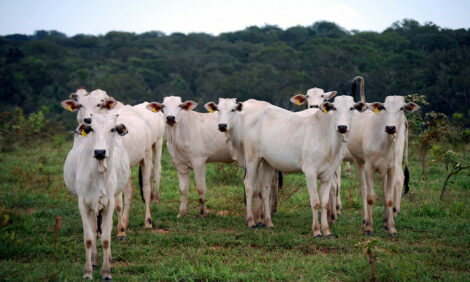



Simmental and Red Angus Publish EPDs on Common Base
US - Both the availability of time and the proficiency to digest increasing volumes of information have evolved into two of ranchers’ greatest challenges – perhaps nowhere more pronounced than in making genetic selection decisions. The Red Angus Association of America (RAAA) and the American Simmental Association (ASA) have partnered to assist producers in their genetic selections by breaking industry barriers for the first true multi-breed estimated progeny differences (EPDs). Starting with the Fall 2012 EPD run, both Simmental and Red Angus EPDs are now described using the same language – their EPDs are published on the same multi-breed base and scale for growth and carcass EPDs. For the commercial cattleman, this will greatly simplify their selection process as they will be able to directly compare growth EPDs (BW, WW, YW, Milk) and Carcass EPDs (Marb, YG, CW, REA, Fat) across the two breeds, as well as compare EPDs of registered hybrids and composite seedstock.
“The result of this collaboration is genetic predictions based on the world’s largest multi-breed dataset with over 10 million animal records,” said Larry Keenan, RAAA director of breed improvement, “which provides users of Red Angus and Simmental genetics the industry’s most reliable genetic predictions.”
In 2010, RAAA – who had been running joint genetic evaluation with Canadian Angus for the past decade – pooled their dataset with the American Simmental Association, which already contained significant volumes of Angus and Red Angus data as well as other breeds.
“The Red Angus and Simmental breeds have given the beef industry something cattlemen and women have been asking for since the advent of genetic evaluation – EPDs that can be compared across breeds,” said Mr Keenan.
The Multi-Breed Technical Advancement Committee (MB TAC) – whose purpose is to guide improvements in the multi-breed genetic evaluation – recommended the common EPD base to RAAA and ASA in its Strategic Plan. This committee is populated with Red Angus and Simmental breeders, association breed improvement staff and some of the leading quantitative and molecular geneticists from academia and the USDA-Meat Animal Research Center (MARC).
RAAA and ASA Board of Directors accepted the MB TAC’s recommendations and worked together with their Breed Improvement Committees to developing a common EPD base for all traits predicted through the multi-breed genetic evaluation. The MB TAC’s ultimate goal is to eventually move all traits to the multi-breed model to be presented on a common EPD base.
What is “base?”
For decades, each breed association has presented their EPDs in their own language or base. Base is no more than a reference point for any trait against which subsequent generations of animals are compared.
While some breeds pick a given year – usually several generations of cattle ago – as their base year, RAAA has historically set the base as the average EPDs of a specific group of high-accuracy sires. Either case is intended to assure that the base population on which future calf crops are to be measured against remains stable.
A breed’s genetic trend for any given trait is reflected by the rate at which its breed average EPD moves away from that of its base population. Typically, any breed’s genetic trend represents the selection pressure breeders have placed on the respective trait over time.
For more information visit the Red Angus Association or the American Simmental Association.
TheCattleSite News Desk


